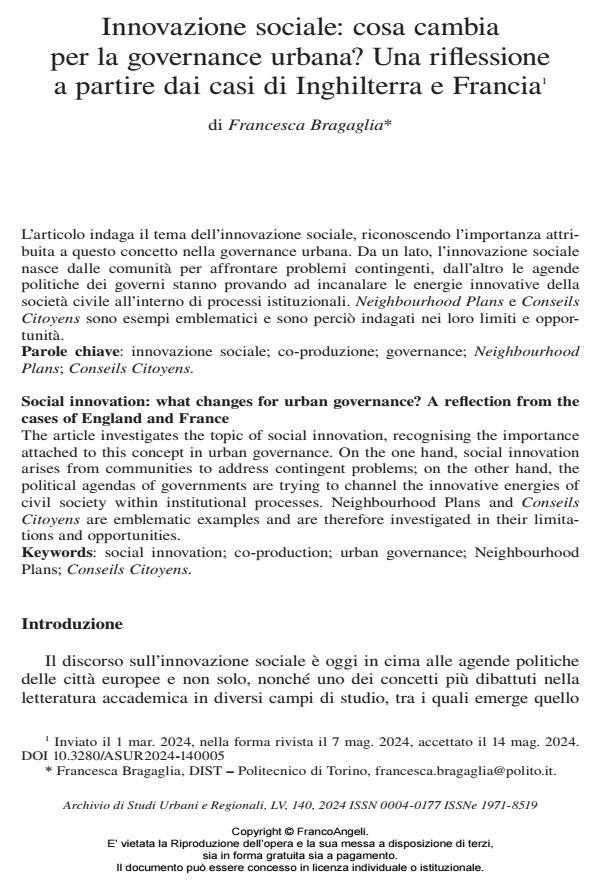Innovazione sociale: cosa cambia per la governance urbana? Una riflessione a partire dai casi di Inghilterra e Francia1
Titolo Rivista ARCHIVIO DI STUDI URBANI E REGIONALI
Autori/Curatori Francesca Bragaglia
Anno di pubblicazione 2024 Fascicolo 2024/140
Lingua Italiano Numero pagine 22 P. 102-123 Dimensione file 384 KB
DOI 10.3280/ASUR2024-140005
Il DOI è il codice a barre della proprietà intellettuale: per saperne di più
clicca qui
Qui sotto puoi vedere in anteprima la prima pagina di questo articolo.
Se questo articolo ti interessa, lo puoi acquistare (e scaricare in formato pdf) seguendo le facili indicazioni per acquistare il download credit. Acquista Download Credits per scaricare questo Articolo in formato PDF

FrancoAngeli è membro della Publishers International Linking Association, Inc (PILA)associazione indipendente e non profit per facilitare (attraverso i servizi tecnologici implementati da CrossRef.org) l’accesso degli studiosi ai contenuti digitali nelle pubblicazioni professionali e scientifiche
L’articolo indaga il tema dell’innovazione sociale, riconoscendo l’importanza attribuita a questo concetto nella governance urbana. Da un lato, l’innovazione sociale nasce dalle comunità per affrontare problemi contingenti, dall’altro le agende politiche dei governi stanno provando ad incanalare le energie innovative della società civile all’interno di processi istituzionali. Neighbourhood Plans e Conseils Citoyens sono esempi emblematici e sono perciò indagati nei loro limiti e opportunità.
Parole chiave:innovazione sociale; co-produzione; governance; Neighbourhood Plans; Conseils Citoyens.
Francesca Bragaglia, Innovazione sociale: cosa cambia per la governance urbana? Una riflessione a partire dai casi di Inghilterra e Francia1 in "ARCHIVIO DI STUDI URBANI E REGIONALI" 140/2024, pp 102-123, DOI: 10.3280/ASUR2024-140005